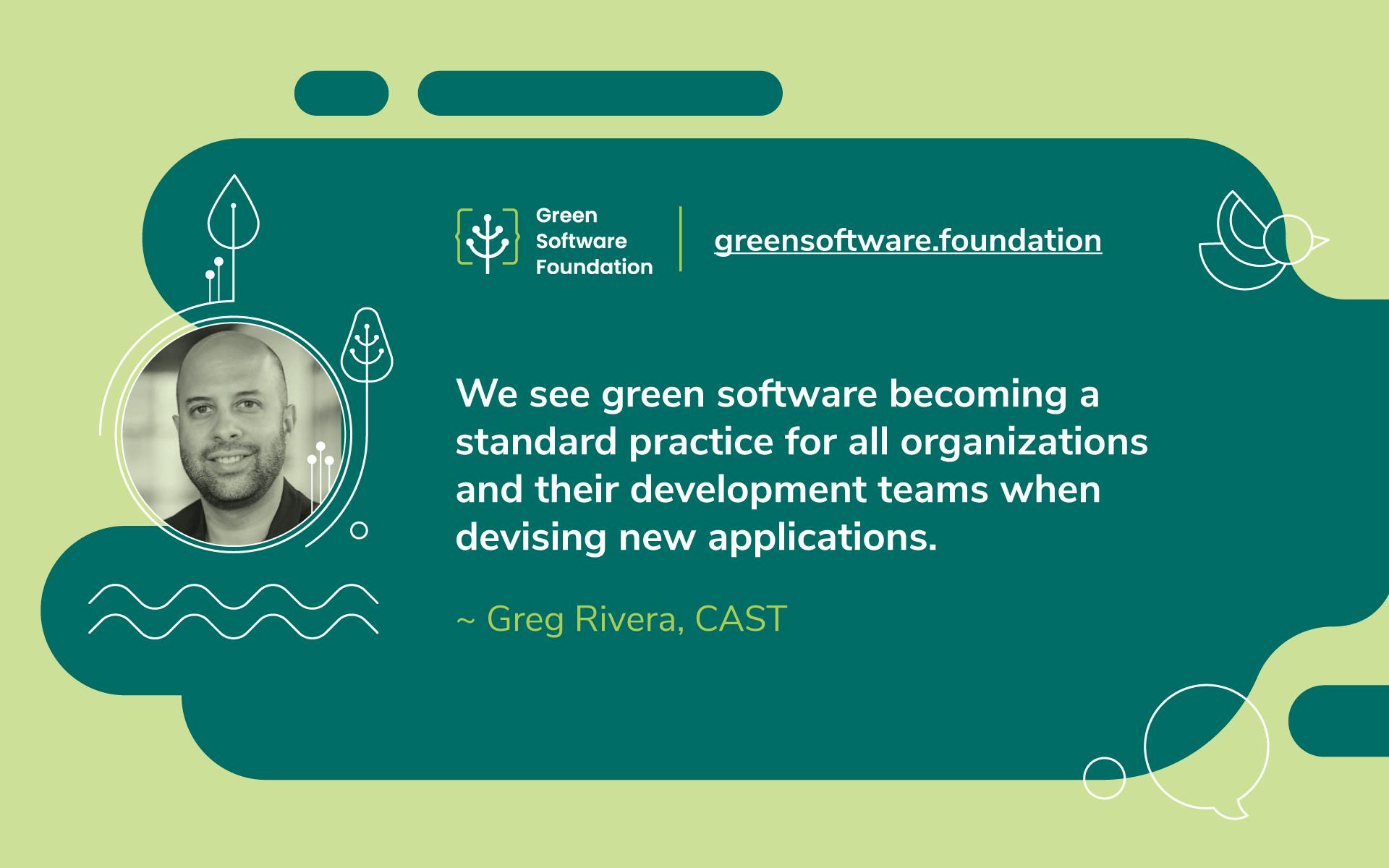Greg Rivera is the product lead for CAST Highlight and is responsible for product strategy, roadmap, and marketing. He has a 25+ year career in technology and digital media spanning companies of all sizes, including Microsoft, one of CAST’s largest partners.
What is your main goal concerning sustainability and green software within your organization?
My primary goal is to ensure we deliver a product that helps our company, partners, and clients get actionable intelligence about making software more sustainable. Helping improve green impact is a meaningful way we can do our part to help reduce technology's negative environmental impacts.
Why did you join GSF?
We strive to deliver a technology solution for green software that is robust, actionable, and based on the best industry research. We have already learned a fair amount from the research that the GSF has made public. We want to stay closely connected to the GSF’s various workstreams by continuously learning and contributing our knowledge to the community. We are still learning about what the GSF has to offer and how we can best get involved, but I believe we can contribute significant value to the Standards, Opensource, and Community working groups.
Where is green software headed?
We see green software becoming a standard practice for all organizations and their development teams when devising new applications. We also recognize that many existing software systems are the ‘brains of the business’ and are not going anywhere soon. Refactoring these systems to be greener will also be a focus for many organizations to achieve their ESG objectives.
What are the main challenges in green software, and how can we overcome them?
The two main challenges are awareness of green software practices and quantifiable measurement of green software’s impact on carbon emissions. We can overcome these by:
Working together with other organizations with similar values to promote the benefits of green software.
Leveraging technology and research (much of which is available through the GSF) to develop a reliable and practical model for measuring the improvement in carbon emissions when making software greener, ideally making this an industry standard.
Which other sustainability initiatives are you working on?
We are constantly working on how to make our company practices more sustainable across technology, business processes, and operations. For example, we recently surveyed our global workforce to identify ways we can reduce our carbon emissions as a company covering topics such as real estate, remote work, office supplies, and more. This will be a regular practice going forward.
Can you tell us a little more about the Green Software Insights capability in CAST Highlight?
CAST Highlight plugs directly into source code repositories and understands applications in a few minutes. It automatically identifies software “green deficiencies” (software code that wastes resources and can be optimized with design and development changes.) It calculates a Green Impact score at both the portfolio and application levels which is useful for comparing different applications within a portfolio and with industry peers via an anonymized benchmark available in the product. Finally, it recommends prioritized actions and suggests remediation steps to make software greener.
This article is licenced under Creative Commons (CC BY 4.0)
